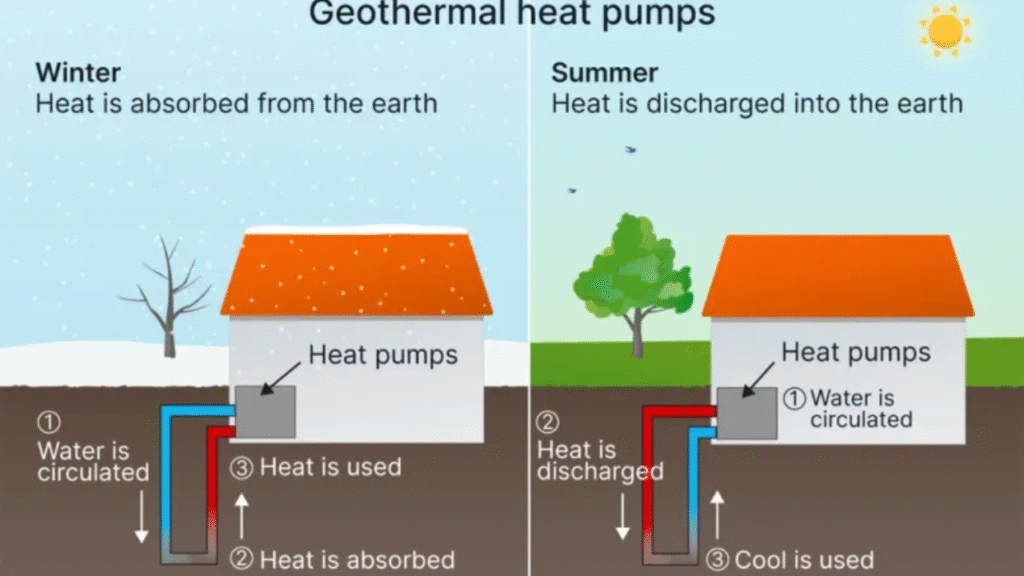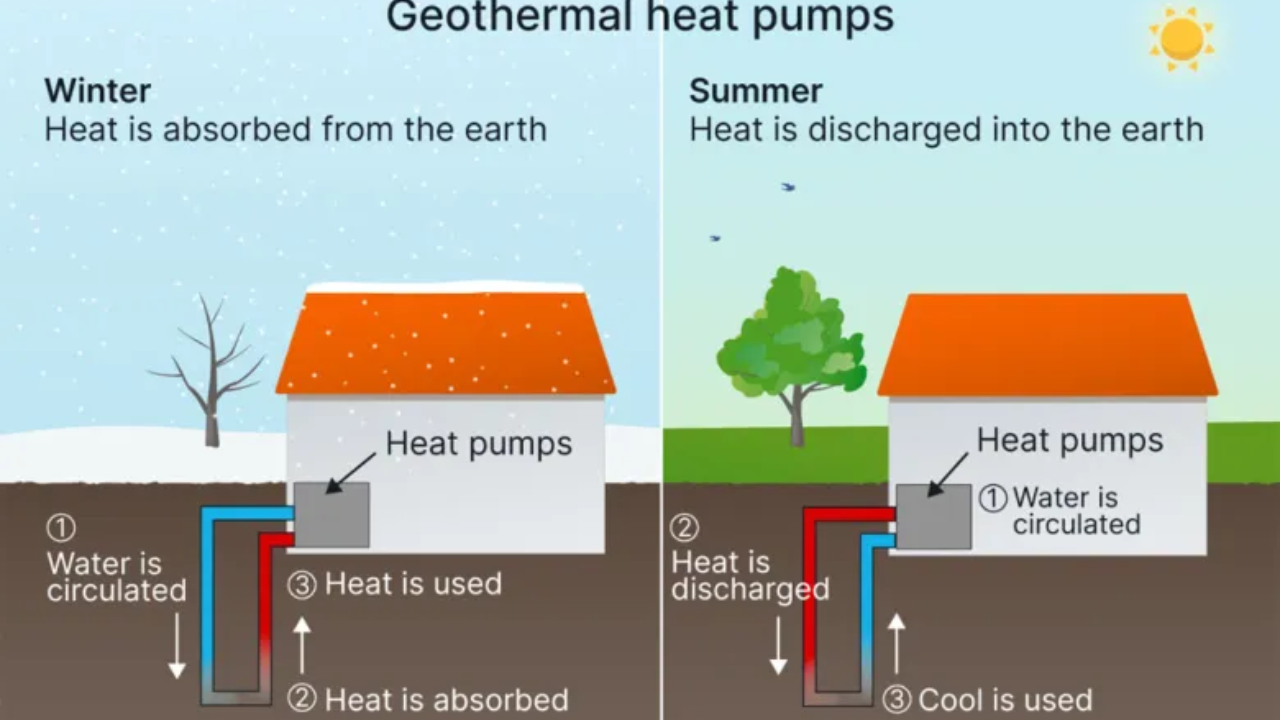
As energy costs rise and environmental awareness grows, homeowners are exploring innovative ways to heat and cool their homes efficiently. One of the most sustainable options is geothermal heating and cooling, which taps into the earth’s natural heat to regulate indoor temperatures year-round. Unlike traditional HVAC systems, geothermal systems provide reliable comfort with minimal environmental impact. This guide explains how they work, the benefits, costs, and considerations for homeowners looking to adopt this technology.
What Is Geothermal Heating and Cooling?
Geothermal systems use the stable temperature of the ground as a heat source in winter and a heat sink in summer. Because the ground a few feet below the surface maintains a relatively constant temperature, geothermal systems are highly efficient compared to air-based heating and cooling.
Key Components:
- Ground Loop: Pipes buried horizontally or vertically in the soil that circulate a water or antifreeze solution.
- Heat Pump: Transfers heat from the ground to the home in winter and reverses the process in summer.
- Distribution System: Ducts or radiant floor systems that deliver heated or cooled air.
How Geothermal Systems Work
- Heating Mode: The fluid in the ground loop absorbs heat from the soil and carries it to the heat pump, which transfers it to your home’s air or water system.
- Cooling Mode: The process reverses—heat is extracted from your home and deposited back into the ground.
- Year-Round Efficiency: Since the ground maintains a stable temperature, geothermal systems operate efficiently regardless of outdoor air temperatures.
Benefits of Geothermal Heating and Cooling
- High Energy Efficiency: Uses 25–50% less electricity than conventional systems.
- Environmentally Friendly: Minimal greenhouse gas emissions when paired with renewable electricity.
- Longevity: Ground loops can last 50+ years; heat pumps typically last 20–25 years.
- Quiet Operation: Fewer moving parts reduce noise levels.
- Low Operating Costs: Reduced energy bills over the system’s lifetime.
Potential Drawbacks
- High Upfront Cost: Installation is more expensive than traditional HVAC systems due to excavation and equipment.
- Space Requirements: Horizontal loops need ample yard space, while vertical loops require deep drilling.
- Installation Complexity: Requires certified professionals for proper design and installation.
- Site Suitability: Soil type, geology, and local climate influence performance and cost.
Cost & Savings Estimates
| Component | Average Cost (USD) | Lifespan | Potential Savings per Year |
|---|---|---|---|
| Geothermal Heat Pump | $8,000–$12,000 | 20–25 years | $500–$1,500 |
| Horizontal Ground Loop | $10,000–$20,000 | 50+ years | Included in total savings |
| Vertical Ground Loop | $20,000–$30,000 | 50+ years | Included in total savings |
| Installation Labor | $5,000–$10,000 | N/A | N/A |
| Total System Cost | $23,000–$50,000 | N/A | $500–$1,500 annually |
Ideal Conditions for Geothermal Systems
- Space Availability: Sufficient land for horizontal loops or feasibility for vertical drilling.
- Stable Ground Conditions: Well-drained soil and consistent underground temperature.
- High Energy Demand: Homes with significant heating and cooling needs benefit most from efficiency gains.
- Long-Term Residency: Recouping installation costs typically requires living in the home for several years.
Environmental Impact
Geothermal systems reduce dependence on fossil fuels and lower greenhouse gas emissions. When paired with renewable electricity, a geothermal system can approach near-zero operational emissions.
Overview Table
| Feature | Description | Benefit to Homeowner |
|---|---|---|
| Heating & Cooling | Uses stable ground temperature | Efficient year-round comfort |
| Energy Efficiency | 25–50% less electricity than conventional systems | Lower utility bills |
| Longevity | Ground loops: 50+ years, heat pumps: 20–25 years | Long-term investment |
| Environmental Impact | Minimal emissions when paired with clean energy | Sustainable living |
| Noise Levels | Quiet operation | Peaceful indoor environment |
| Installation Cost | High upfront cost | Payback through energy savings |
Conclusion
Geothermal heating and cooling offers a sustainable, efficient, and reliable way to regulate indoor temperatures. While upfront costs are higher than traditional systems, long-term energy savings, environmental benefits, and system longevity make it a worthwhile investment for homeowners planning to stay in their properties for many years. Proper site evaluation and professional installation are essential to maximize efficiency and return on investment.
3 Quick FAQs
- How long does a geothermal system last?
Ground loops can last over 50 years, while heat pumps typically last 20–25 years. - Can geothermal systems be installed in small yards?
Yes, vertical loops require less space than horizontal loops but need professional assessment. - Are geothermal systems noisy?
No, they operate quietly due to fewer moving parts compared to conventional HVAC systems.

